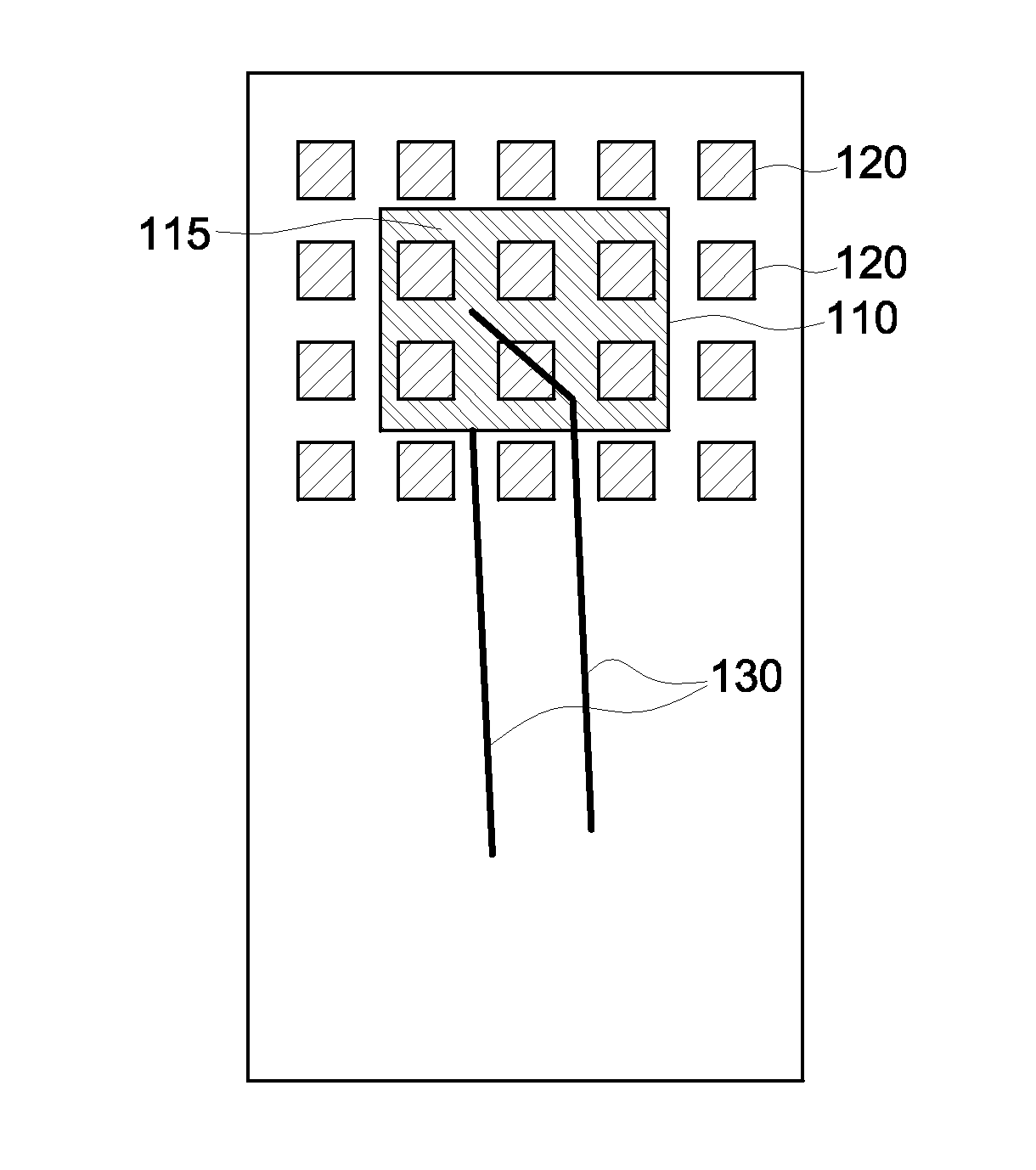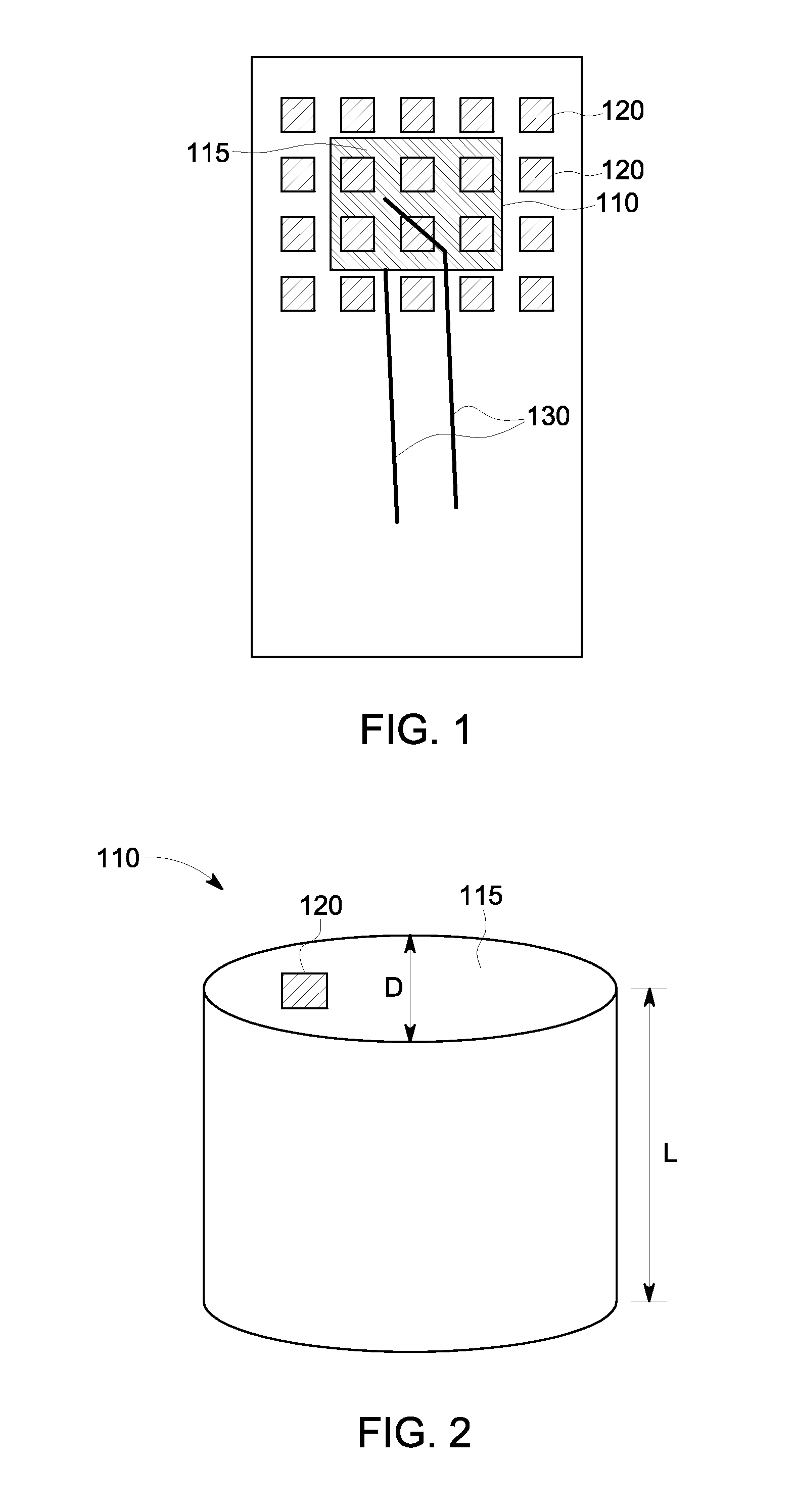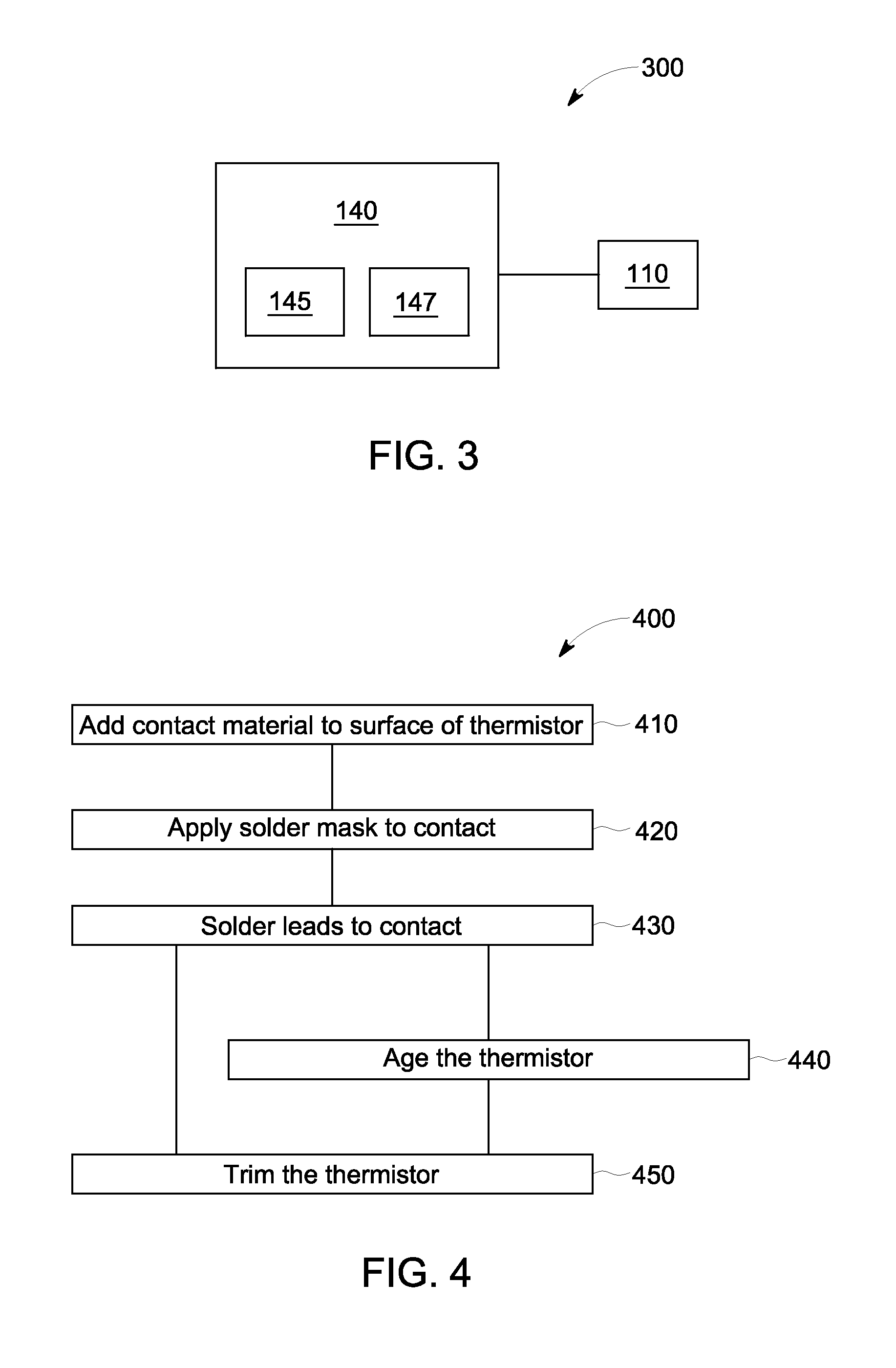Thermistor and method of constructing a thermistor
a technology of thermistor and thermistor body, which is applied in the direction of machines/engines, nuclear engineering, transportation and packaging, etc., can solve the problems of time-consuming manual approach, inconvenient and accurate laser ablation prior to soldering, and inability to achieve the effect of reducing the cost of laser ablation
- Summary
- Abstract
- Description
- Claims
- Application Information
AI Technical Summary
Benefits of technology
Problems solved by technology
Method used
Image
Examples
Embodiment Construction
[0012]The method and system described in the embodiments herein address the issues, noted above, in trimming a thermistor to adjust resistance values. The following is a detailed description of one or more embodiments of the disclosed system and method presented herein by way of exemplification and not limitation with reference to the figures.
[0013]FIG. 1 depicts a thermistor 110 according to an embodiment of the invention. In the exemplary embodiment shown in FIG. 1, the thermistor 110 includes a ceramic block formed as a rectangular cube, for example, with the (rectangular) top (as illustrated in the figure, not necessarily always on top with respect to gravity) surface visible. The thermistor 110 has a contact 115 surface applied to one or both of the opposite ends of the exemplary cube shape, one shown and one not shown (at a bottom surface of the cube-shaped thermistor 110) in FIG. 1. The contact 115 is of a conductive material that may be a metal and in some embodiments may be...
PUM
| Property | Measurement | Unit |
|---|---|---|
| surface area | aaaaa | aaaaa |
| radius | aaaaa | aaaaa |
| diameter | aaaaa | aaaaa |
Abstract
Description
Claims
Application Information
 Login to View More
Login to View More - R&D
- Intellectual Property
- Life Sciences
- Materials
- Tech Scout
- Unparalleled Data Quality
- Higher Quality Content
- 60% Fewer Hallucinations
Browse by: Latest US Patents, China's latest patents, Technical Efficacy Thesaurus, Application Domain, Technology Topic, Popular Technical Reports.
© 2025 PatSnap. All rights reserved.Legal|Privacy policy|Modern Slavery Act Transparency Statement|Sitemap|About US| Contact US: help@patsnap.com



